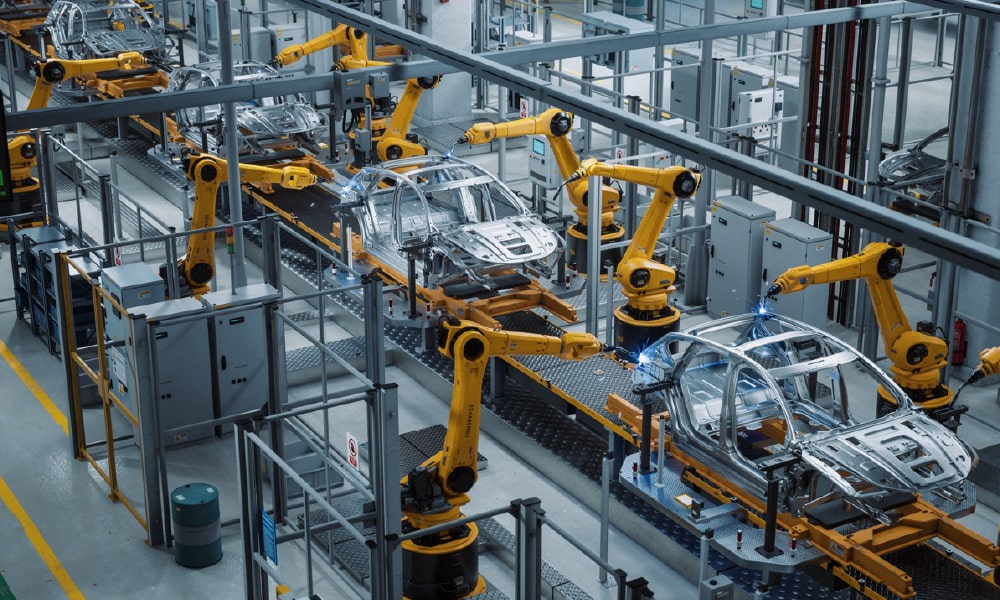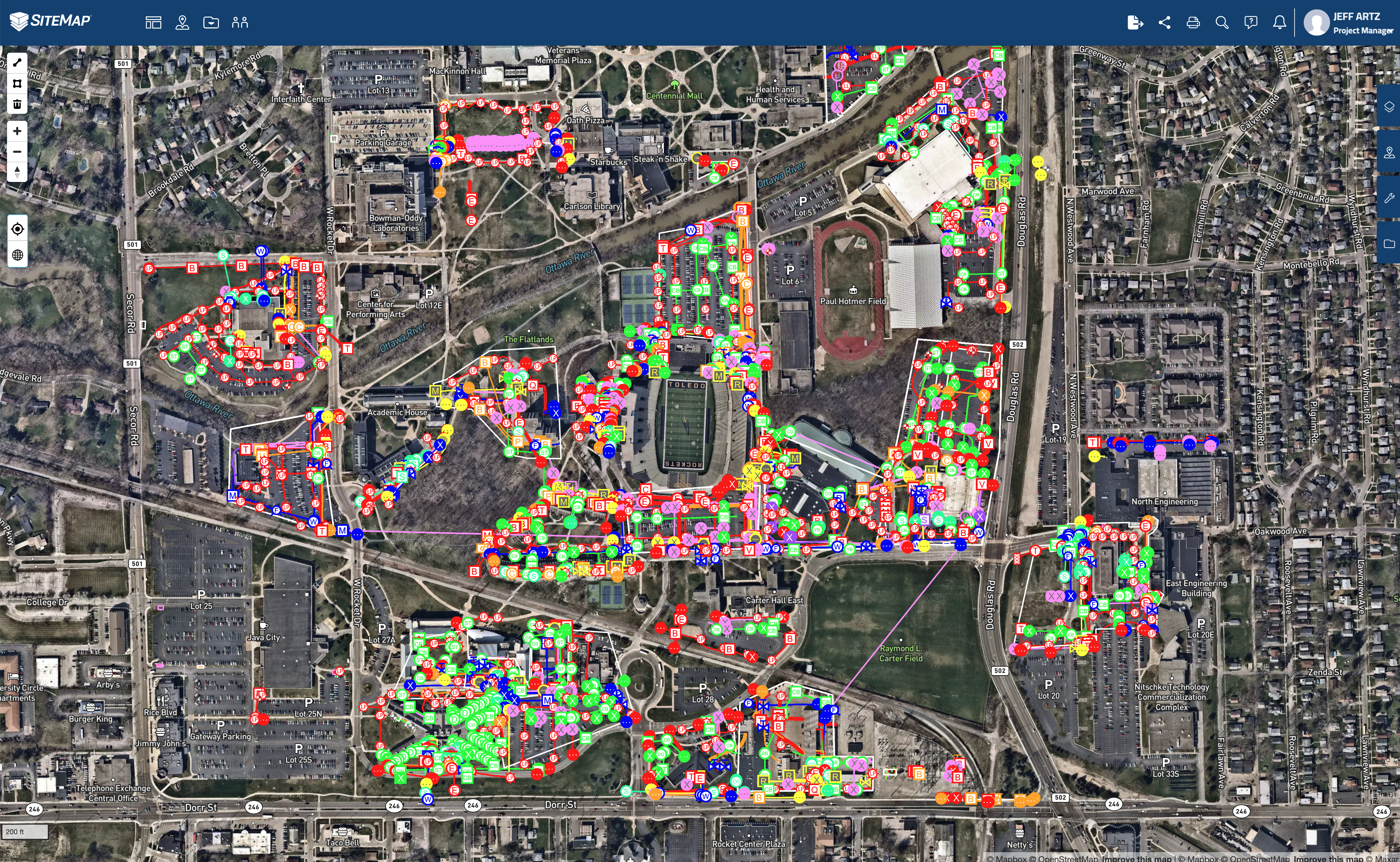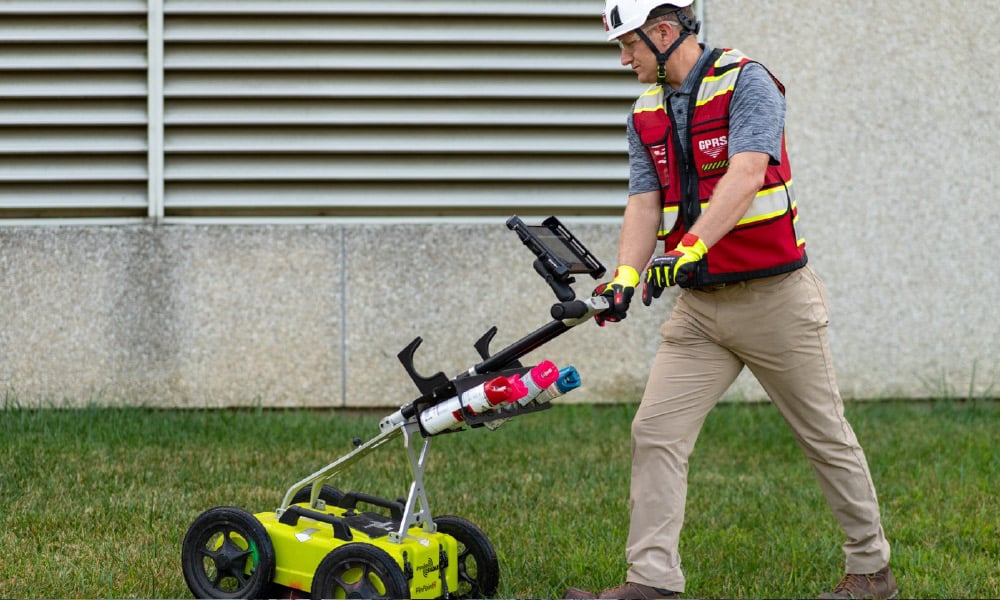
The White House and U.S. Department of Energy (DOE), through the Office of Manufacturing and Energy Supply Chains (MESC), announced $50 million in funding to help small and medium-sized suppliers retool manufacturing facilities for EV component production.
Six states with large automotive workforces have recently been awarded federal funding to support the adaptation of manufacturing facilities for the electric vehicle (EV) supply chain.
The White House and U.S. Department of Energy (DOE), through the Office of Manufacturing and Energy Supply Chains (MESC), announced $50 million in funding to help small and medium-sized suppliers retool facilities for EV component production.
This funding comes from the DOE’s Domestic Automotive Manufacturing Conversion Grant program, which was made possible by the Inflation Reduction Act.
“…America’s auto communities and the workforces they support finally have the tools they need to compete and thrive in the 21st century clean energy economy,” U.S. Secretary of Energy Jennifer M. Granholm said in a press release. “By helping states and manufacturers navigate the emerging EV industry, today’s announcements will help ensure the workforces that have defined America’s auto sector for the last 100 years will have the opportunity to shape the next 100 years.”
The announcement follows an April 2024 Request for Information seeking feedback from local, state, federal, and non-government entities on potential state-federal partnerships.
These partnerships aim to ensure federal funding reaches automotive suppliers transitioning to support electric, hybrid, or fuel cell vehicle supply chains. To qualify, grantees must be a state, territory, or the District of Columbia, with at least 0.5% of their workforce employed in the automotive sector, making them eligible for at least $4 million in grant funding.
The six qualifying states are:
- Michigan: $18,406,420.45
- Ohio: $9,373,236.32
- Indiana: $8,770,249.81
- Kentucky: $4,876,458.57
- Tennessee: $4,513,688.68
- Illinois: $4,059,946.17
States must submit applications by October 15, 2024, at 5 p.m. ET.
Additionally, the DOE announced $1.5 million in funding for three teams of technical assistance providers under the expanded Industrial Training and Assessment Center (ITAC) program. Led by the Purdue University Manufacturing Extension Partnership, the Regents of the University of Michigan, and the Trustees of the University of Illinois, these teams will collaborate with Argonne National Laboratory to develop a Small Supplier EV Transition Playbook. The playbook will guide internal combustion engine suppliers as they transition to the EV market.
The ITAC program promotes the development of a diverse clean energy workforce and strengthens the U.S. manufacturing sector’s role in the global clean energy transition by offering efficiency assessments to small- and medium-sized manufacturing firms, helping them reduce costs and enhance operations.
These initiatives align with President Biden’s Justice40 Initiative, which seeks to ensure 40% of the benefits from certain federal investments in climate, clean energy, and transportation reach historically disadvantaged communities.
The DOE’s Office of Manufacturing and Energy Supply Chains (MESC) will manage the funding for both the Domestic Automotive Manufacturing Conversion Grants and the ITAC program.

An example of SiteMap’s infrastructure data display
SiteMap® Supports the EV Industry
Whether constructing or renovating an EV component manufacturing facility or installing EV charging infrastructure, ensuring these projects are completed safely and on budget is essential.
A single utility strike during excavation can jeopardize the safety of on-site workers and nearby communities, while repair costs can soar into the tens of thousands. Taking proper precautions—such as following federal law and contacting your state’s 811 one-call service before digging—helps safeguard lives, money, and your project timeline.
GPRS’ damage prevention services, including utility locating, precision concrete scanning & imaging, and video pipe inspections, ensure that subsurface damage is avoided during EV infrastructure installation. Our SIM and NASSCO-certified Project Managers (PMs) use ground penetrating radar (GPR) scanners and electromagnetic (EM) locators to accurately map the underground infrastructure, so you know where it’s safe to dig.

GPRS’ damage prevention services help ensure you avoid subsurface damage while installing EV infrastructure.
All this field-verified data is accessible 24/7 through SiteMap® (patent pending), our cloud-based infrastructure mapping software that provides accurate, real-time documentation to protect your assets and workforce.
With SiteMap® and GPRS, you and your team can plan, design, manage, dig, and ultimately build better.
GPRS SiteMap® team members are currently scheduling, live, personal demonstrations.
Frequently Asked Questions
What are the components of electric vehicle charging infrastructure?
Electric vehicle (EV) charging infrastructure refers to the network of charging stations and related services that provide electricity to recharge electric vehicles. This infrastructure includes various types of charging stations, from residential outlets to high-power stations designed for public use. Key components of this infrastructure include:
- Charging Stations: These are places where electric vehicles can be charged. They vary in speed and power output
- Connectors and Plugs: Different EV models may use different connectors. Common types include CHAdeMO, CCS (Combined Charging System), and Tesla’s proprietary connector
- Network Services: Many charging stations are part of a network that offers services like finding available stations, reserving charging slots, and processing payments
- Support Services: Maintenance, customer support, and emergency assistance for EV drivers
What are the differences between regular and fast chargers for electric vehicles?
The main difference lies in their charging speed, which significantly affects how quickly an EV’s battery can be recharged:
Regular Chargers (Level 1 and Level 2)
- Level 1 Chargers: These are standard household outlets (110-120V in the U.S.) and provide the slowest charging speed. It can take from 8 to 24 hours to fully charge an EV, depending on the battery capacity
- Level 2 Chargers: These are higher power chargers (240V in the U.S.) found in homes, workplaces, and some public areas. They can charge an EV battery from empty to full in 4 to 8 hours
Fast Chargers (DC Fast Chargers or Level 3 Chargers)
These chargers use direct current (DC) and much higher power levels (up to 480V or more). They can charge an EV battery to 80% capacity in as little as 20 to 30 minutes.
- Tesla Superchargers: A well-known example of fast chargers, these are designed specifically for Tesla vehicles and are among the fastest, offering charging speeds that can add up to 200 miles of range in just 15 minutes
Are EV charging stations free to use?
There are some free public chargers available, but many chargers require payment with a fee-based on how much energy gets transferred to the electric car. The rate can also be based on a per-minute-of-charging basis, battery size, the charger’s power, or the energy delivery efficiency to the vehicle.
Recent experiments with charging an EV while on the go, however, may change the way drivers pay for utilizing these services.
